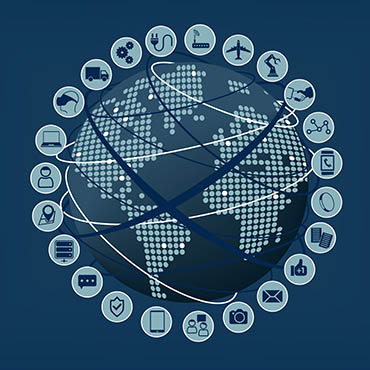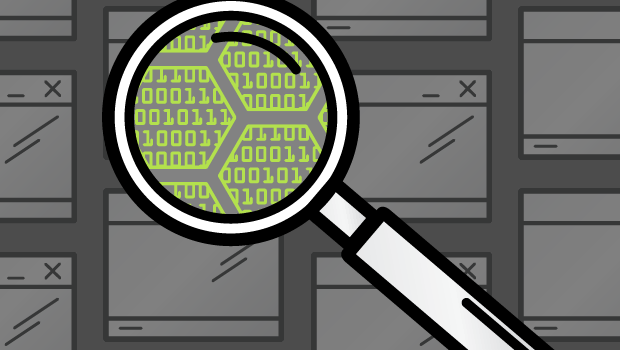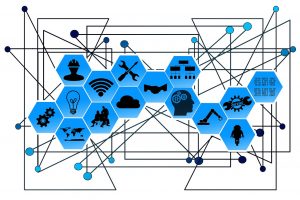Have you seen the commercial where the mom of a sobbing child asks, “Alexa, when did Madison last have a tetanus shot?” And Alexa says, “Madison had a tetanus shot on 8/15/16, and is due for another one on 8/15/26, though the Mayo Clinic recommends a booster shot if she experiences a puncture wound.” And then the mom asks Alexa to locate the nearest open urgent care center that accepts the family’s insurance, and Alexa comes through with driving directions, travel time, and estimated wait time?
You haven’t? Neither have we.
About 40 percent of U.S. households — a number that grows every day — ask Alexa and Siri and “Hey Google!” to perform an astonishing variety of data-related tasks. But they rarely include those that have anything to do, except in the most general way, with health and medical care.
Author Archives: admin
Is IoT growing up? 5 key issues | The Enterprise Project
At the fifth annual MIT Enterprise Forum Connected Things event, the report card on the state of Internet of Things seemed to deliver mixed results. In the five years since the event kicked off, the IoT and Edge Computing space has evolved in some ways and not really materially changed in others.
However, one aspect of the event that struck me was that I didn’t see or hear much that looked like solutions in search of problems. This partly reflects a focus on technologies and applications that aren’t part of the consumer gadget space (which still seems to feature more IoT toys than genuinely useful products).
But it also reflects a maturing industry segment that has really started thinking about use cases and how to systematically apply IoT technology for business value. Let’s check in on five key areas:
Source: Is IoT growing up? 5 key issues | The Enterprise Project
Huawei security: ‘Significant’ engineering flaws are a risk to our telecoms networks, says UK | ZDNet
“Further significant technical issues have been identified in Huawei’s engineering processes, leading to new risks in the UK telecommunications networks,” said the annual report from the Huawei Cyber Security Evaluation Centre (HCSEC) Oversight Board. The board oversees the unit that evaluates the security of the Chinese company’s products used in UK telecoms network.
The report warned: “Overall, the Oversight Board can only provide limited assurance that all risks to UK national security from Huawei’s involvement in the UK’s critical networks can be sufficiently mitigated long-term.” However, it said it did not believe that the flaws it had found were due to Chinese state interference.
Secure your Industrial IoT sensors, or else! | Embedded Computing Design
Sensing is a major component of the IoT and an essential part of most Industrial IoT (IIoT) applications. By adding wireless connectivity and a microcontroller or other processor to a sensor node, one can create a smart sensor. These sensors can be widely distributed without need for a sensor hub. However, they then become extremely vulnerable targets for attackers. Without security, they can become a weak link in the system. Fortunately, the Trusted Computing Group (TCG) techniques that have been developed for other computing, network, wireless, and IoT applications are applicable to these sensor nodes as well. This topic will be explored at a TCG workshop at Sensors Expo in June.
Source: Secure your Industrial IoT sensors, or else! | Embedded Computing Design
IoT security spending to reach $1.5 billion in 2018 – Gartner | The Economic Times

The worldwide spending on Internet of Things (IoT) security will reach $1.5 billion in 2018 — a 28 percent increase from the 2017 spending of $1.2 billion, according to a Gartner forecast on Wednesday.
Global spending on IoT security is expected to reach $3.1 billion in 2021, the report, titled “Forecast: IoT Security, Worldwide, 2018”, said.
IoT in the office: Everything you need to know about the Internet of Things in the workplace | ZDNet
The Internet of Things sees everyday objects being connected to the internet, allowing them either to be controlled remotely, or to collect and share data and communicate without a human being involved. IoT in the workplace can involve a variety of hardware and technologies such as smart devices, robots, and artificial intelligence to improve efficiency and create new business opportunities.
Optimising the smart office: A marriage of technology and people
Can a smart office make your team more productive too?
Russell Wangersky: Convenience vs. security in the internet of things | The Beacon
It’s a little like hiring a doorman without ever doing a criminal reference check or getting a certificate of conduct: you might be getting more than you bargain for.
Last week, a conference in London was told that bringing the smallest kind of technology from the internet of things could bring with it a world of hurt.
First, about the internet of things. That’s the term given to everyday devices that are hooked up to the internet to stream information — and there are a lot of things that do just that. Household appliances, electronic monitoring systems, remote-activation thermostats, computer modems and even home-assistance devices like Amazon’s Alexa and Echo technology: it’s a list that keeps growing in the quest to do every single thing without ever having to lift your butt out of your personalized dent in the couch. (I’m troubled enough that, whenever the internet is on the fritz, a technician with the cable company can finger his way with no trouble into the modem inside our house. And I mentioned my personal concerns a few weeks ago about having an open microphone, like Alexa or Ask Siri, turned on full time in someone’s house.)
Source: Russell Wangersky: Convenience vs. security in the internet of things | The Beacon
Leaders Emerge As The Industrial Internet Of Things Ecosystem Takes Shape | Forbes
In my 2018 predictions article, I made some bold claims about what I thought would happen in the IoT and autonomous vehicle marketplace (Tim Cooks Retires, Apple buys Tesla and Musk takes the reigns). Since then, I have had the opportunity to interact with dozens of companies that are moving the IoT ecosystem from prototype to production. Below are several vendors in the IoT landscape that are leading the industry within their respective lanes.
Source: Leaders Emerge As The Industrial Internet Of Things Ecosystem Takes Shape | Forbes
Security for the exploding Internet of Things ecosystem | FCW

For how many years now have federal CIOs and IT managers heard the bromide “security must be baked in, not bolted on?” It is one of those phrases that gets repeated so often that it’s lost its meaning, but the fact that it’s still considered wisdom today is itself meaningful.
The uncomfortable reality of cybersecurity is that it remains our nation’s biggest technology challenge. Despite high-profile security breaches that have embarrassed agencies and corporations, keeping up with vulnerabilities and staying ahead of hackers from both a technology and user education standpoint isn’t easy. This task is further complicated by the prevalence of siloed legacy technology, which drains agency budgets and limits their ability to make the most of mobile technologies. On average, agencies spend about 75 percent of their IT budgets operating and maintaining existing systems, leaving little opportunity to modernize, according to the Government Accountability Office.
Source: Security for the exploding Internet of Things ecosystem | FCW
Three ways humans power the industrial internet of things | IoT Agenda
The industrial internet of things market is exploding. As a matter of fact, Gartner predicts it’s on pace to reach $80 billion by the end of 2017. Much of this growth is fueled by the promise of what IoT can ultimately deliver with the integration of machine learning and AI technology. And the progress toward this end goal can be seen all around; businesses everywhere are using IoT platforms to gather key equipment data, analyze it and automate the delivery of that logic back to edge devices in a self-servicing and self-maintaining technology ecosystem. This level of automation has many in the industry warning that machines will rise up, though, or as Elon Musk put it, “that building a general AI will summon the devil.”
Source: Three ways humans power the industrial internet of things | IoT Agenda







